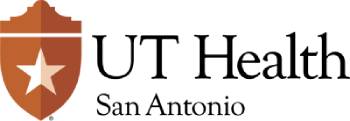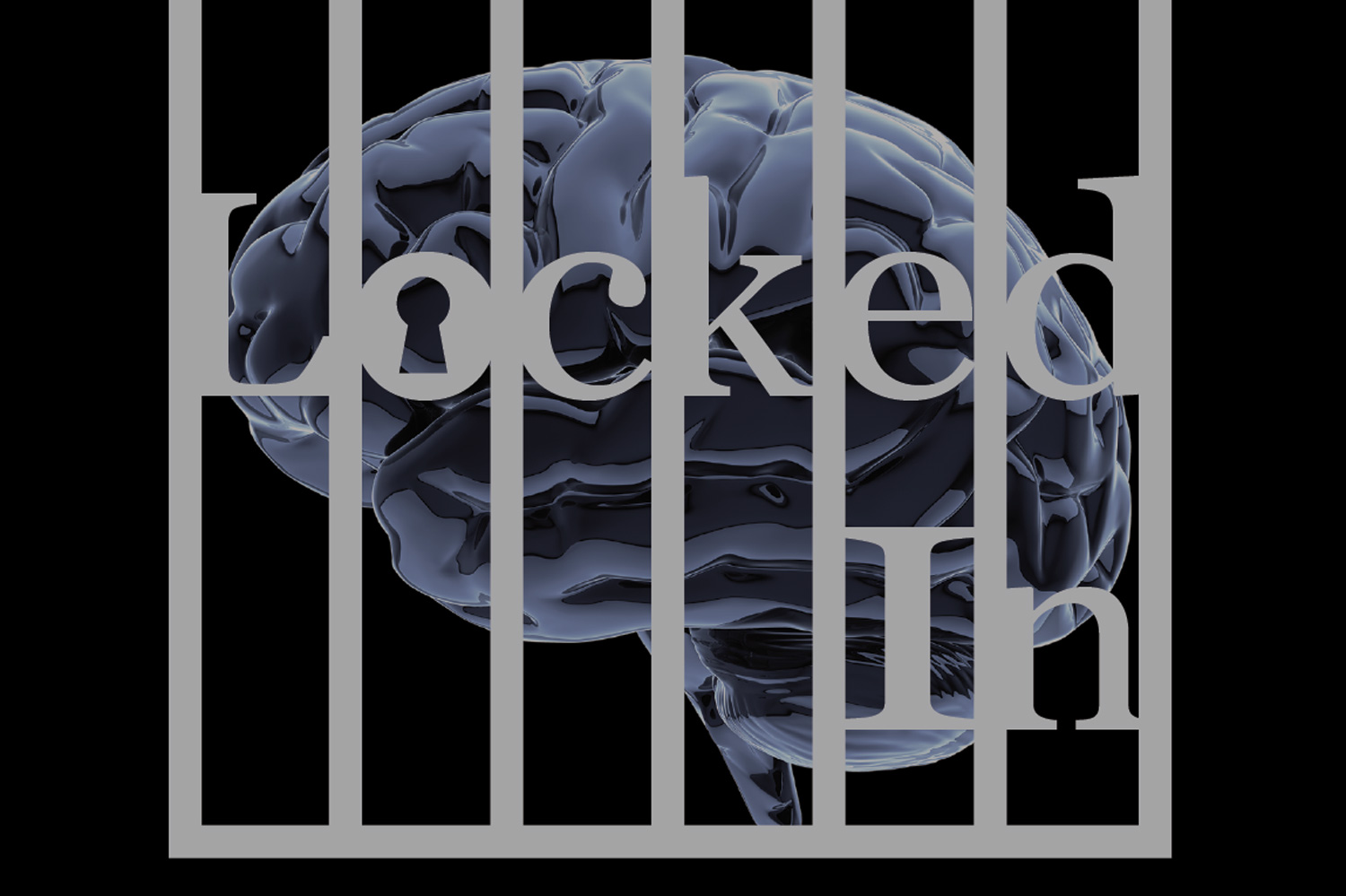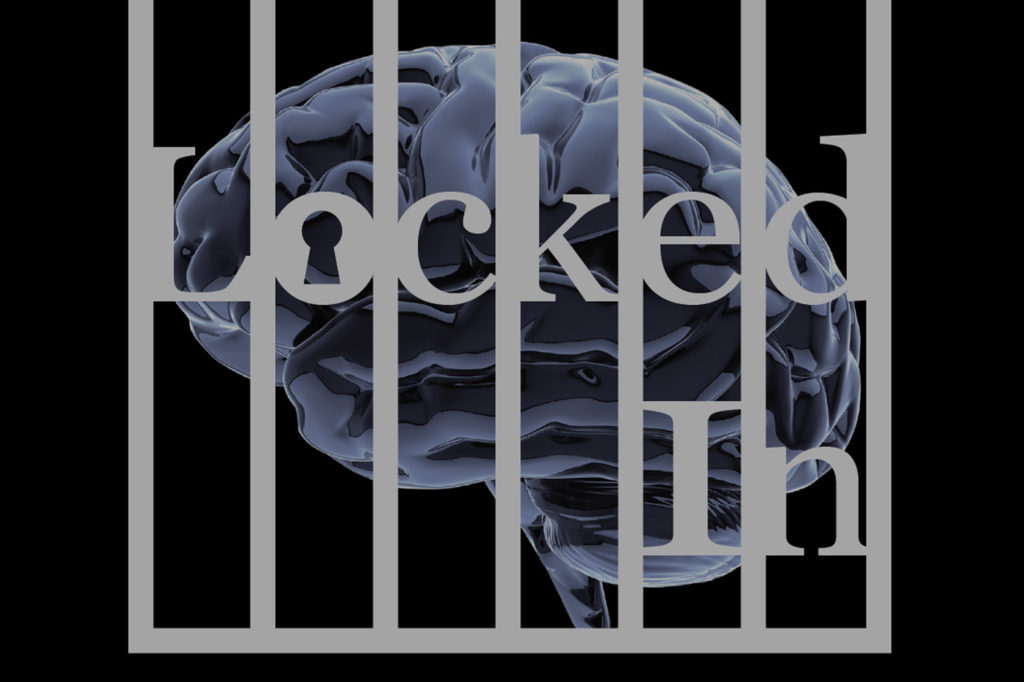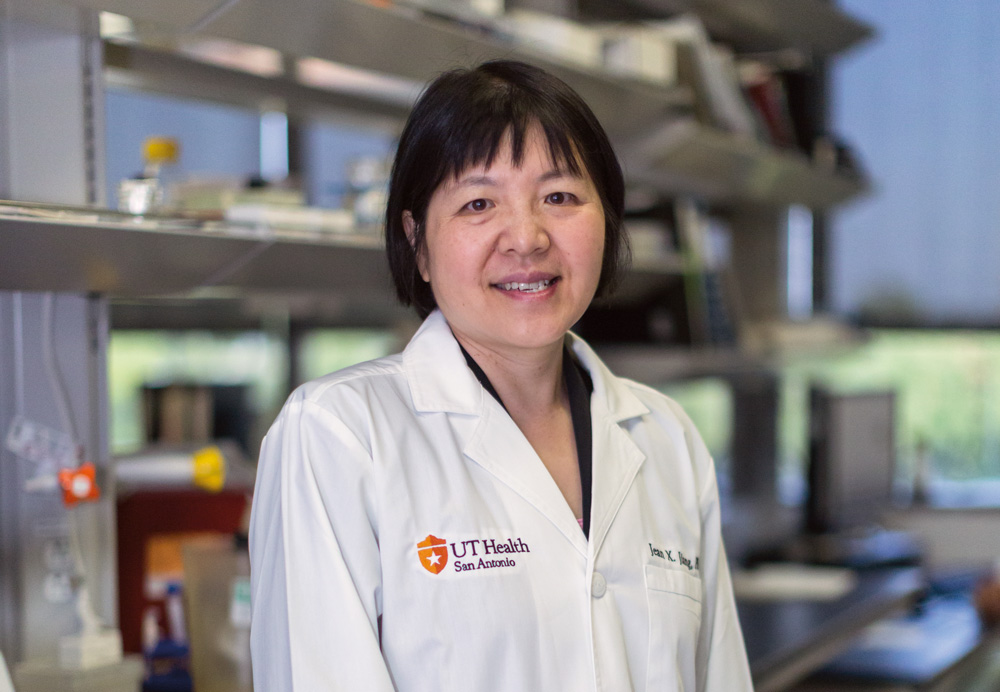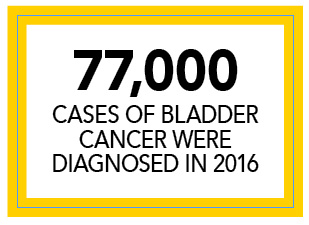Innovation in research and education recognized
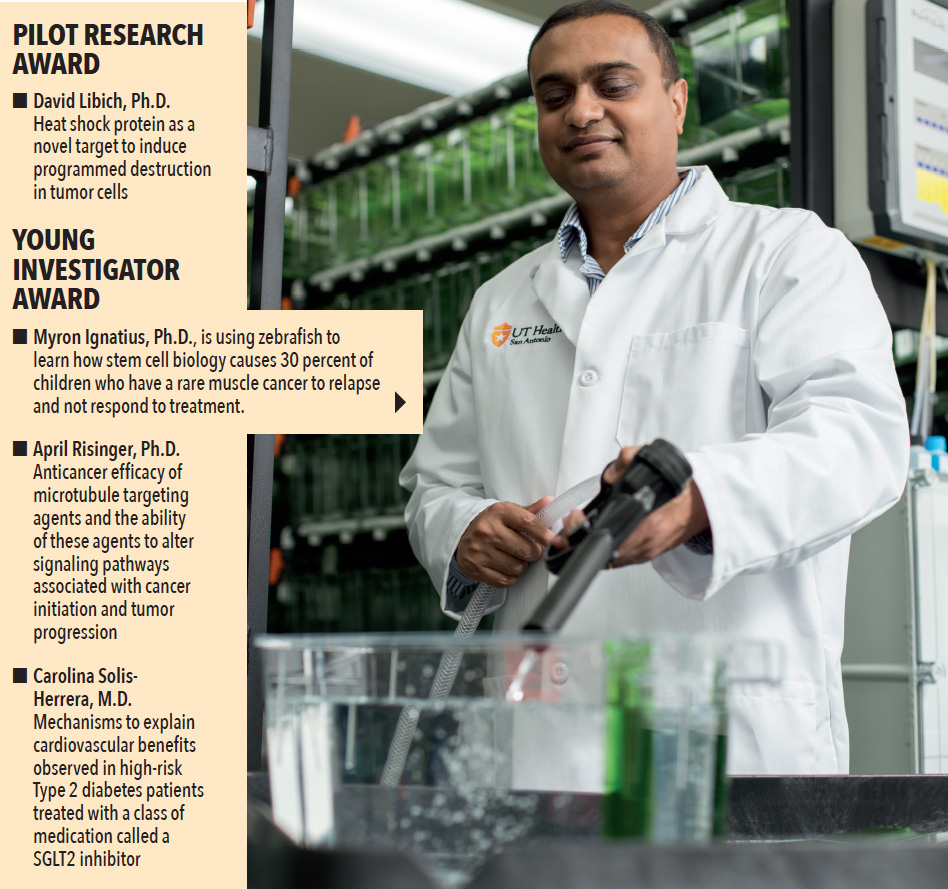 The Max and Minnie Tomerlin Voelcker Fund has awarded $1.45 million to support three innovative research projects and one pilot research project, all conducted by rising young faculty studying cancer and cardiovascular disease.
The Max and Minnie Tomerlin Voelcker Fund has awarded $1.45 million to support three innovative research projects and one pilot research project, all conducted by rising young faculty studying cancer and cardiovascular disease.
The new Voelcker Fund Young Investigator Awards will assist Myron Ignatius, Ph.D., assistant professor of molecular medicine and member of the Greehey Children’s Cancer Research Institute; April Risinger, Ph.D., assistant professor of pharmacology; and Carolina Solis-Herrera, M.D., assistant professor of medicine and member of the UT Health Physicians clinical practice.
A Voelcker Fund Pilot Research Award will support David Libich, Ph.D., assistant professor of biochemistry and structural biology and member of the Greehey institute.
“This vital program of the Voelcker fund targets young investigators to support their careers,” said UT Health
San Antonio President William L. Henrich, M.D., MACP. “Their initial research is evaluated by peer reviewers who are scientists on the national level. The selection of our young faculty members for these grant awards is meritorious and highly important for San Antonio.”
Andrea Giuffrida, Ph.D., vice president for research, said the Voelcker Fund Young Investigator Awards are “a trampoline to launch the researchers into the next phase of their careers as National Institutes of Health-funded researchers studying diseases such as cancer that are specifically targeted by the Voelcker fund.”
The Voelcker fund board of trustees also allocated $846,930 to continue the Voelcker Biomedical Research Academy at the university through 2021. The academy is a two-year immersive summer experience for high school students ages 16 and older to learn about and conduct biomedical research in preparation for college and for careers in science and health care.
The academy recruits diverse and academically accomplished high school students from San Antonio school districts for hands-on training in biomedical research at UT Health San Antonio. This is in preparation for their transition to college.
One objective is to develop the academy as a national model of life sciences educational pipeline programming,
Dr. Henrich said.
The Voelcker Biomedical Research Academy began in 2009 and has been continuously supported by the Voelcker fund from the outset. It has expanded its curriculum to include fundamentals in population health, precision medicine, bioinformatics and biotechnology commercialization, Dr. Giuffrida said.
All high school participants are mentored by UT Health San Antonio faculty, postdoctoral fellows and graduate students, who offer an individualized training plan and assess the students’ scientific progress.
Top recruit

The Cancer Prevention & Research Institute of Texas awarded $6 million to UT Health San Antonio to support the recruitment of internationally known biochemist Patrick Sung, D.Phil.
Dr. Sung’s discoveries have increased understanding of how DNA can repair damage induced by radiation, carcinogens and other causes. Cancer cells are particularly effective at repairing their DNA, which makes them harder to kill. Hindering this capability is a major target for development of therapeutics.
Dr. Sung will occupy the Robert A. Welch Distinguished Chair in Chemistry and will be appointed professor in the Department of Biochemistry and Structural Biology. Additionally, he will serve as associate dean for research in the Joe R. & Teresa Lozano Long School of Medicine, and lead a new research program in genetic integrity at the Mays Cancer Center, the newly named home to UT Health San Antonio MD Anderson Cancer Center.
Dr. Sung has served as professor of molecular biophysics and biochemistry, therapeutic radiology and epidemiology at Yale University in New Haven, Conn.
His appointment will bring him back to UT Health San Antonio, where he worked from 1997 to 2003, first as assistant professor and later as the Zachry Distinguished Professor of Molecular Medicine. From 2001 to 2003, he was co-director of a National Cancer Institute-funded training program in DNA repair at the university.
Dr. Sung plans to bring a lab team of more than a dozen members with him to San Antonio in early 2019.
Locked in
By Will Sansom
Some children narrowly escape the horrors of drowning only to face a different kind of suffering: trapped inside their own bodies, awake but paralyzed, communicating by eye movements and sounds, unable to walk, speak or eat. Researchers at UT Health San Antonio identify it as “post-drowning locked-in syndrome.” New imaging studies reveal that cognitive and sensory networks are preserved in the brains of these children. The injury does not, as formerly believed, impact the entire brain, but is confined to a small area. The findings support parents’ conviction that their locked-in children are experiencing emotions, learning new ideas and developing personalities. The research also creates hope that someday the brain injury will be treatable.
Michael’s story
Sabine Summerville remembers the day as if it were yesterday. In a matter of minutes on an autumn afternoon, her son Michael’s life changed in a few feet of water.
Michael, the seventh of Sabine and Bill Summerville’s nine children, was 21 months old when he drowned in a swimming pool and was resuscitated in October 2008. Eleven children were running around the pool, making cardboard duct-taped boats in a competition to see whose would float the best.
“It was just a few moments of inattentiveness,” she said. “Honestly, when we got him out of the water I thought it would be fine. I did CPR [cardiopulmonary resuscitation], but it just didn’t work.”
Michael was in an unmedicated coma for weeks. It took him six months to slowly regain awareness. Today Michael is 11 and in a wheelchair, completely limited physically.
“I used to believe he had some purposeful movement, but now I think it is all spastic,” his mother said.
Two nurses help care for Michael during the week, giving him 24/7 management of his breathing issues and seizures. Locked-in children develop muscle contractures in areas where stretchy muscle is replaced by inelastic, fibrous muscle. Michael arches his neck backward, which tilts his head back, and because his lower jaws are contracted, he can’t close his mouth.
“It is a constant vigil readjusting his head and helping him close his mouth so he can breathe well,” Summerville said. “You can imagine it’s not comfortable to breathe.”
When Michael is calm, his muscles relax and he breathes better, she said. But then there are the seizures.
Michael may go two or three months without one and then have a spike in activity. After a scoliosis surgery in January 2017, he had seizures multiple times a day for several weeks.
The family was told he’d never be able to communicate. Yet this locked-in child does so—frequently.
“Cognitively, I believe he is a typical 11-year-old boy,” she said. “He understands literature and prefers watching documentaries. In fact, he would rather watch what the adults are watching. He likes being included in family life as much as possible.”
Michael makes quiet vocalizations, like a moan or a hum, and vowel sounds when feeling content. Every now and then—once or twice a week—he even smiles.
“His dad is the one who really gets him to smile,” Summerville said.
Michael enjoys listening to stories, particularly descriptions of the rugged Western environment in Louis L’Amour audiobooks. Documentaries about nature and heavy-duty machines used in construction are among his favorite subjects.
“He likes action and paints a picture in his mind of what he is hearing,” she said.
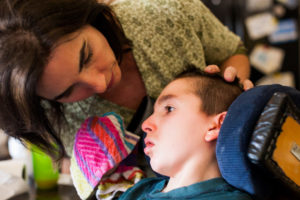
Photo: © Julysa Sosa / San Antonio Express-News via ZUMA Wire
Conrad’s story
Liz Tullis’ phone rang in January 2004, and it was the call no parent ever wants to receive. Her active 17-month-old toddler, Conrad, was visiting his grandparents in Temple, Texas, when he wandered into their swimming pool. He drowned and couldn’t be resuscitated until arriving at a nearby hospital.
She was out of the country at the time and only able to hear updates by phone.
“We never knew how long he was in the water,” Tullis said. “I was told he coded more than once at the hospital. They did everything they could to save him.”
Conrad was diagnosed with anoxic brain injury caused by lack of oxygen to the brain. At the time, not a lot was known about the post-drowning syndrome. What doctors did know is that Conrad would never walk or talk again.
“They told me Conrad was going to live, but they also said he would never get better, never express emotion,” she said. “They encouraged me to institutionalize him. Inside me there was a mixture of spiritual—hope—and intellectual—‘Do we really know he can’t recover?’”
She became acquainted with other parents and a common observation emerged, however. The children, seemingly locked in and unable to communicate, were surpassing doctors’ expectations.
“Verbally is just one way people communicate,” Tullis said. “We all have a repertoire of facial expressions, and Conrad is no different. Just looking at him, you can see what kind of mood he’s in. Definitely we like the smiles. If a conversation is going on, he reacts appropriately. If I say I’m going somewhere, he looks at me like, ‘Where are you going?’ It’s the same type of expressions that you would be able to understand from somebody who can talk and just isn’t. If he’s in pain, he makes a pained face. If he’s happy, he makes a happy face.
“We make him vocalize,” she said. “If we’re going somewhere, we say, ‘Do you want to go?’ and he has to make a small noise saying, ‘Yes, I want to go.’”
Now 15, Conrad attends Alamo Heights High School. School staff members send pictures and notes to tell his mother what’s going on so she can ask Conrad about it.
“He expresses whether something made him happy or sad or excited,” she said. “School staff also tell me Conrad knows when it’s going to be the next period and somebody is going to take him. They are definite about that.
“If I have him in a room and I have to go into another room, and if he feels I haven’t come back soon enough, he will let out this huge yell, like, ‘Get back in here.’ And whenever I have an audiobook of Moby-Dick playing, he sits there and listens every time and will not move. He’s been through the whole book. A friend of ours was talking about Moby-Dick, and Conrad turned his head straight over to the person and recognized the part of the book being discussed.”
Out of her experiences with Conrad and a desire to help other families, Tullis established the Conrad Smiles Fund. The fund has provided support to UT Health San Antonio research, such as networking with parents to seek their children’s participation in clinical studies.
“We were told Conrad would not be able to smile or show emotion,” she said. “But what the doctors learned in medical school was different from what we were experiencing. We’re with our kids all the time. We know. The facial cues and the sounds mean something.”
The research
Peter T. Fox, M.D., director of the Research Imaging Institute and professor in the Joe R. & Teresa Lozano Long School of Medicine, set out to find the science to prove their belief.
Drowning is the most frequent cause of unintentional injury and death in children less than 4 years of age, with more than 3,500 cases annually in the United States. Two-thirds of the time, the children survive thanks to successful CPR.
For the children who survive, but are “locked in,” the prognosis is grim.
“When someone inhales water, very quickly the heart stops beating,” Dr. Fox said. “The brain is the organ that’s greediest for oxygen. The lack of oxygen causes anoxic brain injury. By the time these resuscitated children arrive at emergency departments, they are either comatose or convulsing.”
Dr. Fox, who met the Tullis family in 2010, is trained in radiology, neurology and psychiatry, and uniquely suited to profile these children. With funding from the Kronkosky Charitable Foundation, he designed a series of studies to better understand post-drowning locked-in syndrome. The team, consisting of two doctoral students and two research staff, published its research over multiple years, including three papers in 2017. The work is changing the way these children are viewed by the medical establishment.
“This is a new syndrome,” Dr. Fox said. “It’s not taught in medical school. This is all new neuroscience.”
The researchers studied brain images of 10 children, including Michael and Conrad, and compared them to corresponding images taken in 10 healthy children. What they found confirmed their predictions and supported the experiences that parents were having with their locked-in children.
The studies showed the injury is much more restricted in scope than was previously believed. Rather than impacting the entire brain, the injury is confined to a single motor pathway. Paralysis results from injury to this pathway.
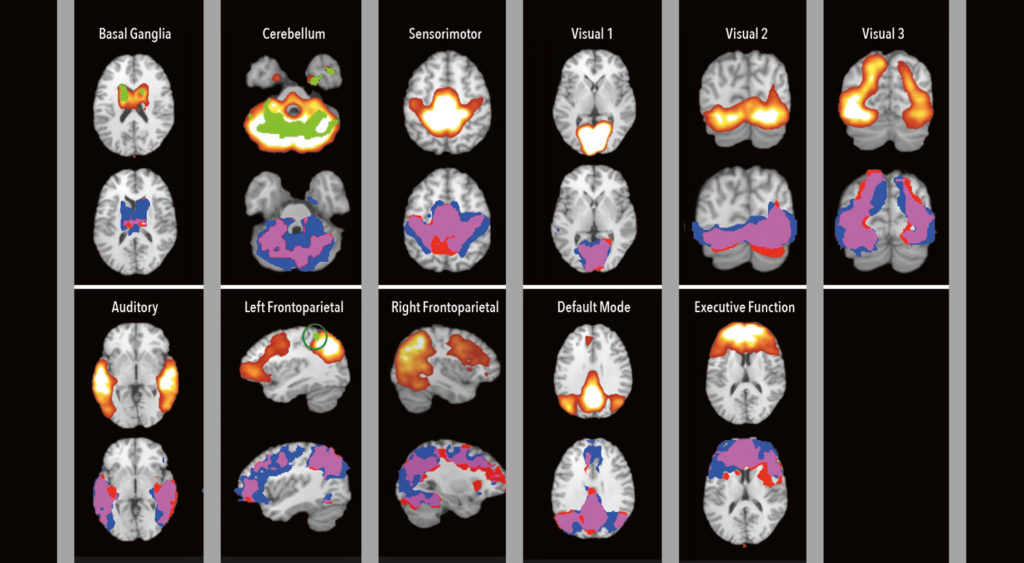
“Rather than finding damage everywhere, as everyone else expected, the injury turned out to be a small stroke,” Dr. Fox said. “Because the injury is adjacent to a blood vessel that can be accessed via catheter, it should be feasible to deliver medication to the site. This could, potentially, save children from being locked in.”
Administering clot-busting drugs used to treat an adult stroke will not work, he said, because the injury is far different, not caused by arterial plaque buildup. An agent that protects the brain would be ideal. Many ideas are being tossed about, including research at UT Health San Antonio that proposes to stimulate activity of caretaker cells called astrocytes in response to brain injury.
The studies also demonstrate that visual, auditory, tactile and cognitive networks are preserved in the children. This explains why the children track with their eyes, hear commands, respond to touch, and enjoy stories they hear or watch.
“Our observations suggest that the severe motor deficits observed in this population can mask relatively intact perceptual and cognitive capabilities,” Dr. Fox said.
The brain system that’s most associated with awareness is called the default-mode network. The team found a strong correlation between social behaviors and preservation of this network, he said.
“Even in the most severely affected of the children, we have evidence that at least the machinery for awareness of themselves and others remains functioning,” he said. “We can see that the machinery is still intact.”
That’s something that Tullis, who also serves as co-author on some of the studies, has suspected for years.
“These kids grow and are cognitively aware,” she said.
The new findings give hope and validation to these families, Dr. Fox said.
“What’s so important about this research is, now we have the science behind us,” Tullis said. “If this happened to us, and we are living it, we can help others around us. We want every child, like Conrad and like Michael, to reach his maximum potential—no limits.”
Noah's FLASHY new hand
By Will Sansom
Like any kid, Noah Gutierrez wants to be cool. He also wants to be super-fast, just like his favorite lightning-quick superhero, the Flash.
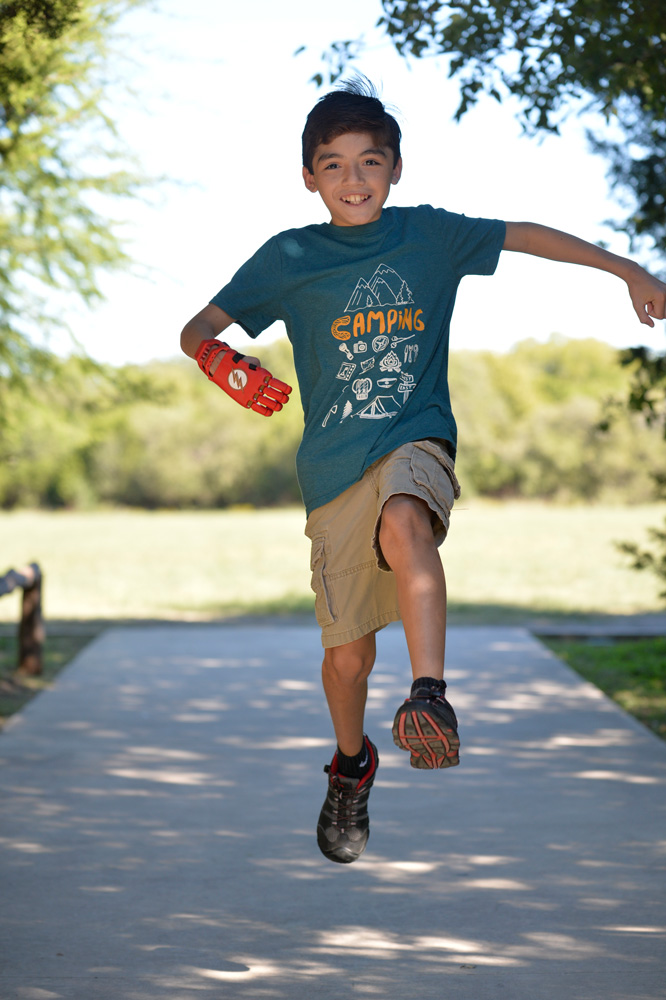
on a 3-D printer and painted
red to match his favorite superhero, is bringing both
fun and function into his life.
Noah, who’s 11, hasn’t let anything slow him down, despite being born with only the thumb on his right hand. He’s adapted well to using the thumb as a post and working around the nonfunctional finger nubs on that hand.
But necessity is the mother of invention, Plato said. Accordingly, a new use for three-dimensional (3-D) printers is the printing of prosthetic devices for patients like Noah.
When Noah saw a story on TV about a 3-D-printed hand helping a young girl, it sparked his curiosity to see if he, too, could benefit.
“It was something that I looked forward to,” Noah said. “I thought that maybe I can do some things I haven’t been able to do.”
Noah and his mother, Larissa Gilmette, visited the Orthotics/Prosthetics Clinic of UT Health Physicians to ask if a prosthetic hand could be printed for him.
There they met Jesse Rettele, L/CPO, a clinical instructor of rehabilitation medicine in the Joe R. & Teresa Lozano Long School of Medicine and medical director of the Orthotics/Prosthetics Clinic. He accepted the challenge.
Prostheses fill in what a person is missing. In Noah’s case, could an appliance be printed to simulate both the flexibility and grip of real fingers? Rettele partnered with Sam Newman, a medical 3-D animator at UT Health San Antonio.
The biggest challenge with conventional 3-D-printed hands is discomfort, so Newman took a scanned image of Noah’s hand and merged those specifications with a 3-D-printed hand template in his computer. He then scaled down the size of the fingers to match Noah’s other hand.
The “hand” is actually a system of connected parts—plastic knuckles and fingers, durable straps, rubber hinges, flexible cables and traction pads. This custom invention is secured to Noah’s wrist and fits over his undeveloped fingers.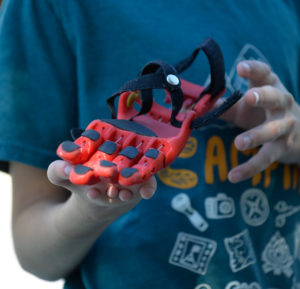
“The 3-D-printed hand utilizes the motion at the wrist to control the fingers,” Rettele said. “Flexible cables pull the fingers closed when the wrist is flexed. The fingers automatically extend back open when the user’s wrist is relaxed.”
The four prosthetic fingers move together at once and bend in the anatomically correct places, allowing the fingers to grasp objects, Rettele said.
Dacron straps, made from the same material as seat belts, are used to anchor the prosthesis to Noah’s hand. Noah can fine-tune the straps’ tightness based on the task he is doing—looser for light work such as brushing his teeth or combing his hair, tighter for heavy-duty activities such as riding his bike or lifting weights.
Someday, he hopes, he’ll climb monkey bars on the playground with his friends.
“This has been a dream of Noah’s for a very long time,” his mother said.
The hand, printed in red, is accented by a Flash lightning bolt that Newman painted.
“The hand is futuristic-looking and fun, with the look and design expressing Noah’s personality and interests,” Rettele said. “Instead of trying to hide his hand, he may actually want to show it off.”
The entire prosthesis weighs about 7 ounces—less than half the weight of a traditional prosthetic device. It’s customized for comfort and function, whereas most hand prostheses are not. And it cost only $60, compared to $4,000 to $5,000 or more for traditional hand prostheses, Rettele said.
Best yet, if anything breaks, everything can easily be rebuilt.
“We have the file on a computer, so I’ll just send it over to the printer and make another one,” Newman said.
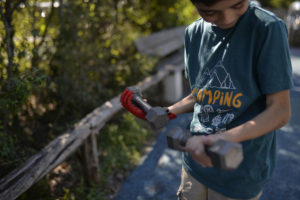 The prosthesis has given Noah a new confidence, his mother said, and the lightning bolt reminds him every day to work hard. “It just inspires me to do certain things that I wasn’t able to do before,” Noah said.
The prosthesis has given Noah a new confidence, his mother said, and the lightning bolt reminds him every day to work hard. “It just inspires me to do certain things that I wasn’t able to do before,” Noah said.
That includes a career as a game programmer when he grows up.
“Noah’s new hand has really helped him, not only physically but mentally,” his mother said. “I can see how much his confidence has grown, and how much it has helped his self-esteem. He really wants to meet other kids like him, and let them know it is OK to be different.”
And, just like the Flash, Noah said, “I want to encourage them not to give up.”
Deal targets breast cancer, spinal cord injury treatments
By Will Sansom and Lety Laurel
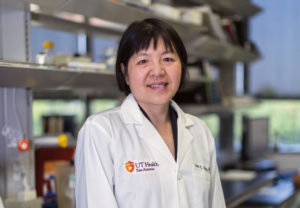
In what is being called the most financially significant agreement in university history, UT Health San Antonio has entered into a landmark licensing deal to develop new treatments for breast cancer and spinal cord injuries.
The deal is worth up to $114 million.
UT Health San Antonio and UTHealth Houston granted exclusive global licenses for two unique biologic therapeutics to AlaMab Therapeutics Inc., a subsidiary of CSPC Pharmaceutical Group Ltd. of China. In exchange, the company will make an initial upfront payment of $4.5 million to license the two antibodies, discovered by researcher Jean Jiang, Ph.D., Ashbel Smith Professor at UT Health San Antonio.
Should the novel, first-in-class therapies prove successful, “the prospect of mitigating or even curing these debilitating conditions becomes possible,” said UT Health San Antonio President William L. Henrich, M.D., MACP.
One antibody can inhibit the neural inflammatory reaction and suppress further damage after spinal cord injury, which can help in recovery. The second antibody is useful in breast cancer metastasis to the bone.
The discoveries stem from research Dr. Jiang began in 1991 in response to a New York Times article about gap junctions, which serve as connectors between cells. Though there was a belief that these connections could be used for cancer treatment, there wasn’t much work being done in the area.
“I realized this is not really getting into prime time to be able to get into treatment of human disease for any translational research,” she said. “There was so much that was unknown in basic science about these channels.”
This scientific gap presented Dr. Jiang an opportunity. In the decades that followed, she worked with the goal of someday translating her research into drug development.
She began focusing on a group of proteins called connexins, which form gap junctions in the cell. These proteins play an important role in physiological and disease-related processes in neuronal and skeletal tissues.
She developed antibodies to test in animal models.
“They worked out really well,” she said. “We tested one in the injury model and found that it could help mice recover from injury. We tested the other one in the bone metastasis model of breast cancer and this antibody showed efficacy in suppressing cancer growth.”
Bone tissue is a common place for cancer metastasis. Most often, the cancer originates in the breast, prostate or lungs. Once cancer has spread into the bone, survival rates plummet. There are few therapy options. Likewise, there is no drug approved by the Food and Drug Administration to effectively treat spinal cord injuries.
“We felt like we had the potential to one day create a new drug to help patients. It was a very exciting moment,” Dr. Jiang said. “But it was a gradual discovery. We had to do the good science to make sure we understood fully the new mechanism of how it works. We had to do lots of work to back it up.”
After success in animal models with mouse antibodies, Dr. Jiang partnered with Zhiqiang An, Ph.D., from UTHealth Houston, to humanize the antibodies for preclinical and in vivo efficacy studies.
Preclinical research will continue for the next couple of years, she said. They will optimize the drugs, then test them again in animal models to explore disease indications. Eventually, they will submit the drugs to the FDA for approval to enter clinical trials. The drug development process could take a decade or more. And there is no guarantee of success. But Dr. Jiang said she’s confident in her research.
“Drug development is a long process and the chance of failure is so high, but we feel that if these can be developed, then we certainly will provide treatment for patients where currently there is no treatment,” she said.
“I always have had it in my mind that the research I’m doing in the lab all these years will one day help humanity. One day I will be able to help patients.”
A new home

A new era of research and discoveries in aging began in October when UT Health San Antonio broke ground on a new and expanded Sam & Ann Barshop Institute for Longevity & Aging Studies.
The three-story, 108,000-square-foot building will be located at the corner of Floyd Curl and Charles Katz drives, adjacent to UT Health San Antonio’s Medical Arts & Research Center and across the street from the university’s Greehey Academic & Research Campus.
The first floor of the new building will include open research labs, laboratory support, administrative and research faculty offices, and a large vivarium with support spaces and cage wash facilities. The second and third floors will accommodate future research labs and faculty offices.
An open-air bridge will cross over Floyd Curl and connect the Barshop to the South Texas Research Facility. The total project will cost $70.2 million.
This vision of a world-class center for aging research first came into focus in 1991, when Edward J. Masoro, Ph.D., founded the university’s Aging Research and Education Center through a leadership award granted to him by the National Institutes of Health.
In 2001, the Barshop Institute for Longevity & Aging Studies was created through a donation from San Antonio philanthropists Sam and Ann Barshop. It was located at the Texas Research Park on Lambda Drive in southwest San Antonio.
Since that time, the Barshop has grown into one of the world’s premier aging research centers and is now the only aging-intensive research institute in the country to have two NIA-funded centers (Nathan Shock and Claude D. Pepper), a testing site of the NIA-sponsored Interventions Testing Program, and a U.S. Department of Veterans Affairs Geriatric Research, Education and Clinical Center.
Construction on the new building is expected to be complete by late 2019.
Fine-tuning cancer therapies
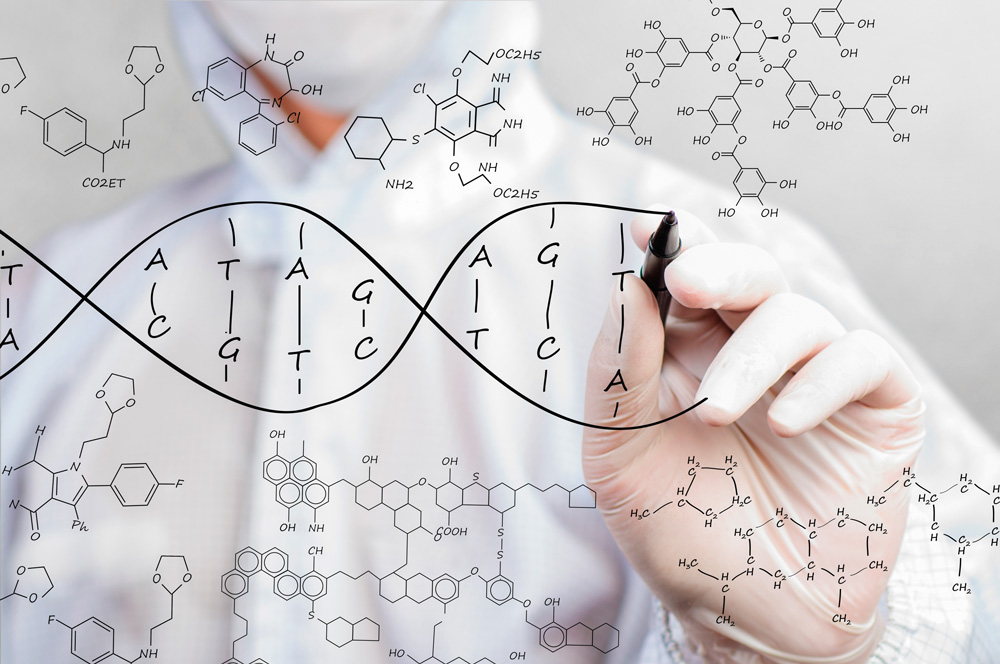 Researchers have discovered epigenetic changes that contribute to one-fifth of cases of acute myeloid leukemia (AML), an aggressive cancer that arises out of the blood-forming cells in bone marrow. The mutations also play a role in a majority of low-grade gliomas, which are among the most-treatable brain tumors.
Researchers have discovered epigenetic changes that contribute to one-fifth of cases of acute myeloid leukemia (AML), an aggressive cancer that arises out of the blood-forming cells in bone marrow. The mutations also play a role in a majority of low-grade gliomas, which are among the most-treatable brain tumors.
“The best way to treat a cancer is to understand it,” said Ricardo C.T. Aguiar, M.D., Ph.D., professor of medicine. “We have added to the understanding of a broad swath of cancers.”
The cancers carry a mutation called isocitrate dehydrogenase, or IDH. In the future, cancers will be classified by genetic mutations such as these rather than by location, said Dr. Aguiar, a hematology-oncology researcher at UT Health San Antonio Cancer Center, and senior author of the study.
IDH mutations alter an epigenetic process called RNA methylation, which leads to deregulation of hundreds of other genes and processes inside the tumor cell, the researchers found.
Epigenetic modifications change gene activity but don’t structurally change the body’s genetic blueprints. Diet, aging, environmental exposure and other factors can prompt epigenetic changes that amplify or silence certain genes.
A drug that inhibits these mutant enzymes is undergoing clinical trials. The discovery provides evidence for why the drug may help patients with acute myeloid leukemia and low-grade gliomas.
“Acute myeloid leukemia remains a very difficult-to-treat tumor and, unfortunately, the majority of patients still die of their disease,” Dr. Aguiar said. “By better understanding how the IDH-dependent cancers work, we may be able to fine-tune future therapies and improve survival.”
A surgery-free option
Radiation therapy may be as good as bladder surgery at helping patients survive advanced bladder cancer, a new study shows.
Researchers analyzed outcomes from more than 12,000 patients worldwide to compare survival of those who had radical cystectomy surgery versus those who had radiation. The result could influence decision-making by patients and their physicians in the treatment of muscle-invasive bladder cancer.
Radical cystectomy is surgical removal of the bladder and is considered the gold-standard treatment for advanced bladder cancer.
“Radical cystectomy remains the preferred option for some patients, but this review opens the door to greater evaluation of radiation therapy as a beneficial alternative. The decision must be made on a case-by-case basis,” said Dharam Kaushik, M.D., assistant professor of urology and senior author of the study. He collaborated with the Cleveland Clinic on the research.
Based on the analysis, Dr. Kaushik and the team have launched a pilot clinical research study to evaluate survival among 30 patients with advanced bladder cancer—15 treated with surgery and 15 with radiation.
“There is a lot of controversy about this. We want to see if the finding holds,” he said.
An estimated 77,000 cases of bladder cancer were diagnosed in 2016, with more than three-fourths of cases affecting men, according to the American Cancer Society. An estimated 16,000 Americans died of the disease in 2016.
When devastation hits
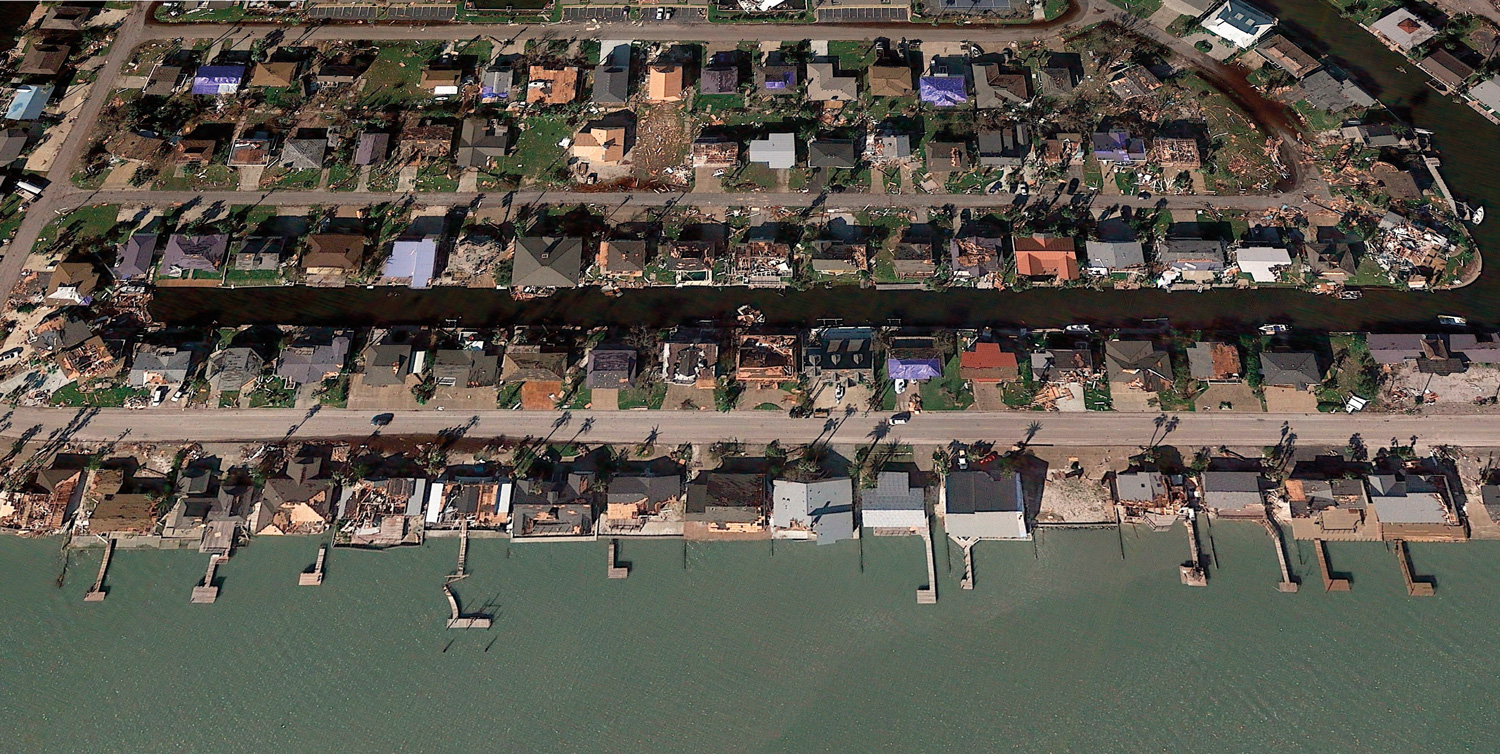
By Will Sansom and Joe Michael Feist
When Hurricane Harvey hit the Texas Gulf Coast in August as a Category 4 storm, it devastated communities in an area that is already medically underserved, with many residents over age 65 and with limited access to care.
Immediately, the university community responded. Faculty and students traveled to Houston’s hardest-hit areas to provide urgent health care. The UT Police Department sent relief commissioned police officers to deliver supplies for their counterparts at The University of Texas MD Anderson Cancer Center in the Texas Medical Center. Students, staff and faculty donated untold units of blood.
Support has continued in the months since, with teams from the School of Nursing traveling twice a month to Rockport and surrounding communities to perform community needs assessments, health evaluation of individuals and families, vaccinations, health care coordination, case management, counseling and other necessary
health services.

Their work is supported by a $200,000 donation from singer Paul Simon, co-founder of the Children’s Health Fund (CHF) and his wife, singer Edie Brickell. The CHF contributed an additional $15,000.
The CHF is a nonprofit organization that provides health care to children and families through mobile medical units around the country.
“Mr. Simon and his wife had a vision to provide health and social services to the area by the simplest means,” said Cindy Sickora, D.N.P., RN, vice dean for practice and engagement in the School of Nursing, who coordinated the school’s relief effort. “We assured [them] that we will do our utmost to help members of the area’s communities, most especially the uninsured, children and the elderly.”
Among other preventive measures, the teams are providing vaccines to senior adults, who often allow immunizations such as tetanus to lapse. Hepatitis A, shingles, influenza and pneumonia vaccines are also being administered.
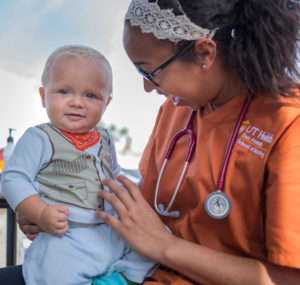
A team also canvassed neighborhoods to ensure the well-being of homebound senior adults and others. During these visits, health information was distributed.
Team members also are working to identify community mental health needs.
The goal is to reach a minimum of 1,000 people in need of health resources. Once the project is complete, all services will be transitioned to sustainable health care delivery systems in the area.
“We are committed to providing compassionate care to those most in need,” said Eileen T. Breslin, Ph.D., RN, FAAN, dean of the School of Nursing. “We have experienced, dedicated nurses who can deliver the competent care that people need.”
Faculty from the School of Nursing have been working with disaster relief teams for many years as part of a population health curriculum, and many faculty were part of relief efforts in the aftermath of Hurricanes Katrina and Sandy.
“This type of service is in our DNA as nurse leaders,” Dr. Breslin said.
Helping hearts
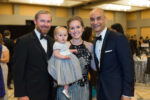
S. Adil Husain, M.D., pediatric cardiothoracic surgeon, who has performed multiple surgeries on Evie to repair her heart.
By Will Sansom
Evie Winkler was 1 week old when she underwent her first open-heart surgery. Before birth, Evie was diagnosed with only one ventricle in her heart, and her parents, Jennie and Zack Winkler of Midland, weighed the alternatives.
After visiting multiple locations for care and speaking to numerous skilled physicians during the pregnancy, they chose to entrust Evie’s life to S. Adil Husain, M.D., pediatric cardiothoracic surgeon at UT Health San Antonio.
Evie was born Oct. 11, 2016, at University Hospital, UT Health San Antonio’s clinical partner and teaching facility. The first of multiple surgeries to repair her heart took place Oct. 18, 2016.
The Winkler family, including Evie, traveled to San Antonio recently to reunite with Dr. Husain, professor and chief of the Division of Pediatric Cardiothoracic Surgery. They also were honored guests at the 2017 President’s Gala hosted by President William L. Henrich, M.D., MACP. More than 1,500 attended the Sept. 23 event at the Grand Hyatt.
Each year, the President’s Gala raises significant funding from community members to support the university’s clinical, research and education missions. Past galas have established funds and endowments in trauma care, cancer research, community service programs, education and scholarships, and, in 2016, Alzheimer’s and other neurodegenerative diseases.
This year’s gala established the Lacie and Joe Gorder President’s Endowment in Heart Disease Research. Joe Gorder is chairman, president and CEO of Valero Energy Corp. He and his wife, Lacie Gorder, are interested in helping advance heart disease research across the life span, from infants to seniors. Honorary chairs of the President’s Gala were Bill and Margie Klesse. Mr. Klesse is the former chairman, president and CEO of Valero Energy Corp.
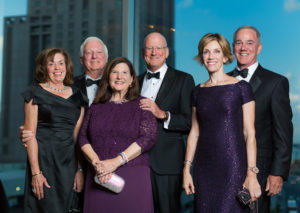
At the gala, Dr. Henrich announced a personal pledge made by the Gorders to match the funds raised at the gala, bringing the Gorder endowment to more than $1 million at its inception. The endowment will help to find new therapies and cures, shape prevention protocols and ensure access to breakthrough health care.
Heart disease remains the No. 1 killer of adults in Texas, and each year nearly 4,000 Texas children are born with a congenital heart defect.
“While the impact of heart disease is staggering, advances in research are improving the prevention, early detection and treatment of heart disease in adults and helping more infants with congenital heart disease, like Evie, to survive to adulthood,” Dr. Henrich said.
Despite these successes, the work is not over, Dr. Henrich said.
“In the last decade, progress in research has produced new therapies, and this has led, for the first time in the modern era, to a reduction in overall mortality and morbidity from heart disease,” he said. “But this is not the time to do a victory lap.”
Cardiovascular disease accounted for more than 800,000 deaths last year in the U.S. and is still the leading cause of death among Americans, responsible for 1 in every 3 deaths. More than 90 million Americans are living with some form of cardiovascular disease, and 2,200 Americans die every day from the disease. The cost of heart disease approached $350 billion in the U.S. last year. By 2030, the costs of global cardiovascular disease will be more than $1 trillion.
In addition to establishing the Lacie and Joe Gorder President’s Endowment in Heart Disease Research, Dr. Henrich announced a special patient support fund. The Lacie and Joe Gorder Pediatric Heart Care and Family Support Fund will provide pediatric patients and their families needed assistance with travel and other family support.
